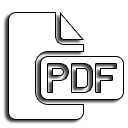A Aerobic Low Impact Decreased Premenopausal Symptoms
DOI:
https://doi.org/10.33859/jni.v3i2.275Keywords:
low impact aerobic, premenopausal symptomsAbstract
Background: Premenopause for women is the time when the body begins to experience changes or transitions to menopause. At this time there will be changes in the body, such as the decline in reproductive function, hormonal, physical and psychological changes. Symptoms that are often a complaint of premenopausal women are a burning sensation that radiates from the chest to the neck and face or often known as hot flushes, night sweats or night sweats, easy fatigue, sleep disturbances, decreased memory, easy to feel, easy to relax. and depression. One way to reduce premenopausal symptoms is to exercise, one of which is light aerobic exercise.
Objective: To identify the effect of low impact aerobic exercise on premenopausal symptoms of premenopausal women.
Method: The design of this study used a pre-experimental design with Static Group Comparison/Posttest Only Control, the subjects of this study were 96 premenopausal women in Sukajaya Palembang Village. Data collection using a premenopausal symptom questionnaire. Analysis of the difference data using the independent t test.
Conclusion: The study was conducted on 96 premenopausal women and the results of the analysis showed that the premenopausal symptoms of the intervention group were lighter than the control group. Premenopausal symptoms in the intervention group and the control group showed a significant difference with a value of =0.00 (Ï<0.05).
Downloads
References
Dale, P., J.A. George, D.F. William, et all. (2018). Neuroscience (4th ed). Oxford University Press.
Daley, AJ., HS. Lampard, C. M. A. (2009). Exercise to Reduce Vasomotor and Other Menopausal Symptoms: A review. Journal of Maturitas, 63, 176–800.
Elavsky, S., Gonzales, J. U., Proctor, D. N., Williams, N., & Henderson, V. W. (2012). Effects of physical activity on vasomotor symptoms: Examination using objective and subjective measures. Menopause, 19(10), 1095–1103. https://doi.org/10.1097/gme.0b013e31824f8fb8
Giriwijoyo, H. Y. S. S. (2012). Ilmu faal olahraga (fisiologi olahraga): fungsi tubuh manusia pada olahraga untuk kesehatan dan prestasi. PT. Remaja Rosdakarya.
Hammar M., Lindblom, H., Lindh-Åstrand, L., & Rubér, et all. (2016). Resistance training for hot flushes in postmenopausal women: A randomised controlled trial. Maturitas, 126, 55–60. https://doi.org/10.1016/j.maturitas.2019.05.005
Hargens, T. A., Kaleth, A. S., Edwards, E. S., & Butner, K. L. (2013). Association between sleep disorders, obesity, and exercise: A review. Nature and Science of Sleep, 5, 27–35. https://doi.org/10.2147/NSS.S34838
Hunter, M. (2014). Managing Hot Flushes with Group Cognitive Behaviour Therapy. In Managing Hot Flushes with Group Cognitive Behaviour Therapy. Routledge. https://doi.org/10.4324/9781315764191
Hussein E.H., Emara, Hala, M. A. M. (2013). Effect of Aerobic Exercise on Depression and Insomnia in Post Menopausal Women. British Journal of Applied Science & Technology, 3(3), 557–566. https://doi.org/10.9734/bjast/2014/3159
Luoto, R., Moilanen, J., Heinonen, R., Mikkola, T., Raitanen, J., Tomas, E., Ojala, K., Mansikkamäki, K., & Nygård, C. H. (2012). Effect of aerobic training on hot flushes and quality of lifea randomized controlled trial. Annals of Medicine, 44(6), 616–626. https://doi.org/10.3109/07853890.2011.583674
Moilanen, J. M., Mikkola, T. S., Raitanen, J. A., Heinonen, R. H., Tomas, E. I., Nygård, C. H., & Luoto, R. M. (2012). Effect of aerobic training on menopausal symptoms-a randomized controlled trial. Menopause, 19(6), 691–696. https://doi.org/10.1097/gme.0b013e31823cc5f7
Morgan, G., & Hamilton, C. (2009). Obstetri dan Ginekologi untuk Kebidanan dan Keperawatan. Nuha Medika.
Reid, K. J., Baron, K. G., Lu, B., Naylor, E., Wolfe, L., & Zee, P. C. (2010). Aerobic exercise improves self-reported sleep and quality of life in older adults with insomnia. Sleep Medicine, 11(9), 934–940. https://doi.org/10.1016/j.sleep.2010.04.014
Salihin, S. (2015). Persepsi Peserta Aerobik Dari Kompetensi Instruktur Aerobik Universitas Negeri Semarang Di Kecamatan Gunungpati Tahun 2013. E-Jurnal Physical Education, Sport(Health and Recreation), 1792–1798. https://doi.org/10.15294/active.v4i5.5464
Schumacher, S. (2009). Nursing for Wellness in Older Adults. Clinical Nurse Specialist, 23(1), 45. https://doi.org/10.1097/01.NUR.0000343075.27343.9b
Smith, J. (2000). Exercise and Sport Science. Mayo Clinic Proceedings, 75(8), 877–878. https://doi.org/10.4065/75.8.877-b
Soekarna, W. (2016). Strategi Berlatih Dan Melatih Senam Aerobik. Jurnal Cakrawala Pendidikan, 3(3). https://doi.org/10.21831/cp.v3i3.8993
Sternfeld, B., Guthrie, K. A., Ensrud, K. E., Lacroix, A. Z., Larson, J. C., Dunn, A. L., Anderson, G. L., Seguin, R. A., Carpenter, J. S., Newton, K. M., Reed, S. D., Freeman, E. W., Cohen, L. S., Joffe, H., Roberts, M., & Caan, B. J. (2014). Efficacy of exercise for menopausal symptoms: A randomized controlled trial. Menopause, 21(4), 330–338. https://doi.org/10.1097/GME.0b013e31829e4089
Steward, D. . (2006). Menopause: Mental Health Pratitioner’s Guide. American Psychiatric Publishing, Inc.
Suharjana, F., H. P. (2008). Kebugaran Jasmani Mahasiswa DII. PGSD. PenJas. FIK. UNY. Jurnal Pendidikan Jasmani Indonesia, 5(2), 66–73.
Swasta Budayati, E. (2015). Olahraga dan Fisiologi Reproduksi Wanita. MEDIKORA, 2. https://doi.org/10.21831/medikora.v0i2.4672
Utian, W. H. (2005). Psychosocial and socioeconomic burden of vasomotor symptoms in menopause: A comprehensive review. Health and Quality of Life Outcomes, 3. https://doi.org/10.1186/1477-7525-3-47
Downloads
Published
How to Cite
Issue
Section
License
Copyright (c) 2023 Journal of Nursing Invention E-ISSN 2828-481X

This work is licensed under a Creative Commons Attribution 4.0 International License.












